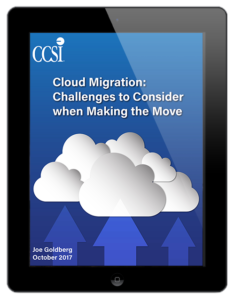5 Assumptions on How Data Centers of the Future Will Probably Look Like
The changes around the data center are coming in fast and thick. This industry is one that has experienced serious and significant changes in even more recent times. The constant development means that as we go into the future, the evolution of the tasks and concepts of the data center can only continue. There are already many expectations of future data centers as we look ahead to the future with much keenness. The feeling amongst experts is that large data centers such as Facebook, Google, and Microsoft will scale out their data centers with the mindset of supporting Information Technology (IT) workloads in many exciting ways.
The fact that organizations need technologies and business processes for them to perform to their optimal best explains the importance of data centers and why they are very essential to the IT of an organization. But the development and advancement of technologies in the world mean that there will also be changes to the use and implementation of the data centers.
Because of our enthusiasm and interest in what the future data centers hold, we’ve studied patterns in the development of data centers and have come up with some assumptions for the future development of data centers. Here are 5 top assumptions:
- Smaller sized data centers A quick survey by essay writers and IT experts at Emerson Network Power showed that 58% of the people believed that data centers of the future will be a lot smaller than what we have now. 27% of the participants believe that these future data centers will be bigger than today’s data center. While 14% of the participants are of the opinion that future data centers will be the same as the present.Although data centers also have a need for more storage, you would expect that this will result in larger data centers with more power and more space. But density is not the same as the area. They are quite different and, in this case, they play an important role. It is easier to manage and construct data centers that are dense than the large data center.There are many futuristic innovations that can come as a result of working with data centers that are small but have great densities. The layout of data centers can be turned inside-out. All the IT stuffs and server racks can be taken off quickly and placed around the center perimeter.
- Power generation and cooling option Because these futuristic data centers are expected to have higher density, this implies that they would also be needing greater cooling. Our experts predict that the data centers for the future will be built such that they can generate powerful and cooling options for themselves. Data centers are predicted to be built close to power generation. This will allow the data center to generate the power that they use for themselves. They will most likely also be built around areas where we have environmental cooling options. This means that the future data centers will not just be to generate power for themselves, they will also be able to dump the heat that they create into polar installations, freshwater containment or geothermal heat pumps. There are, however, several factors that will responsible for powering the data centers of the future. Some of these factors are: Climate factors: whether the data centers will be built in regions that have cool climates or not.Economic factor: whether they will be developed in areas that have a lower cost of energy. Demand factor: when there is a change in the demand for storage and computing. Evolving technology: is there a possibility that loads can shift between places that have a very high capacity for power depending on different times during the day or in a year.
- Reduced consumption of energy
One of the major predictions for future data centers is that they will consume a lot less power than they currently do. According to some of the best essays written about data centers, many experts really believe that to produce the same amount of output as today’s data centers produce, future data centers will not need as much energy as current data centers need. The congressional belief amongst experts is that by the year 2025, the amount of power that the data centers will receive through solar energy will be about one-third of its total power. When you consider the development of solar power technology today, then you will see how this makes sense. The fact that most data centers are skyscraper buildings and there will be nothing to block the sun just proves why it makes more sense. Natural gas, wind and nuclear energy will be used to power a large part of the 2/3 power that is left. - Private clouds
The shift to the cloud is becoming a common feature with many organizations even though all of these organizations would like to remain in control and not give it up. For organizations to make use of their private cloud infrastructure, they will have to use data centers. In a survey by the IDC survey, it was discovered that over 28% of the total sum spent on the cloud was spent on a private cloud.Businesses already use software solutions for their private cloud service while ensuring that their information is intact in the corporate-controlled situation. Wherever the infrastructure for public cloud is required, it is utilized. Many clients also do not care about the location where their service comes from. But for organizations, data centers will be responsible for facilitating private cloud services and ensure that the workload is performed in the most secure and best way. - High-performance computing
High-performance computing or HPC is now very accessible since it became a service in the open cloud. The growth and expansion of artificial intelligence (AI), and machine learning (ML) imply that there are applications that are based on these crucial technological developments. As these applications continue to expand, the implication for the accessibility of HPC is that it will become a crucial strategy for businesses and organizations that are looking to hold on to their cutting-edge advantage. Although the prototype and trials are done with the framework of a public cloud, the need for these large organizations to be in end-to-end control will be what turns applications based on artificial intelligence and machine learning into a business differentiator for them. The only means that this will be effective is if it is presented in the corporate data center.
Conclusion
In a few years from now, data centers will be playing more renowned roles in our technological setup. These are just a few of what we expect in the near future.
Cloud Migration: Challenges to Consider when Making the Move
Migrating applications and data services to the cloud is fraught with risk. While businesses expect improved flexibility, cost and control, many don’t anticipate the application performance problems that can arise due to significant infrastructure changes. Learn the challenges that will need to be tackled before making the jump to the cloud in this free whitepaper.
Author Bio: Michael Gorman is a highly skilled proofreader and freelance writer providing dissertation services and best writing service. He currently works in the best essay writing service UK. Being interested in everyday development, he writes various blog posts and discovers new aspects of human existence every day. Feel free to contact him via Facebook or check his Twitter.
Michael is a guest blogger, all opinions are his own.
The post 5 Assumptions on How Data Centers of the Future Will Probably Look Like appeared first on CCSI.
*** This is a Security Bloggers Network syndicated blog from CCSI authored by Guest Author. Read the original post at: https://www.ccsinet.com/blog/future-data-centers/






